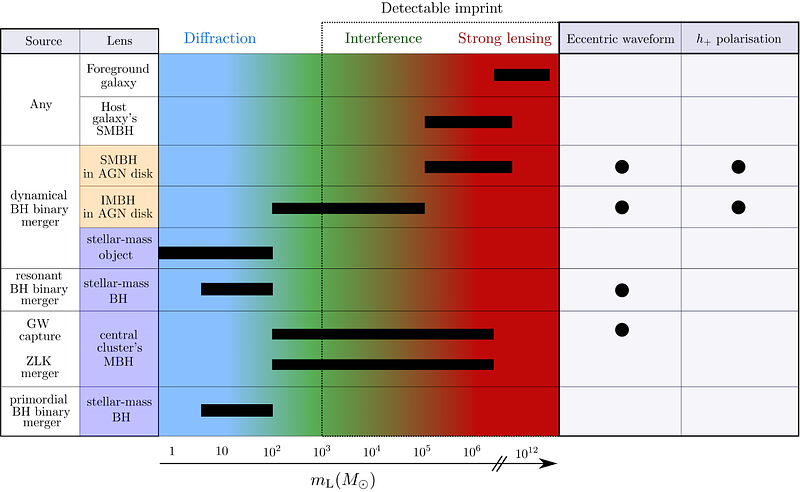Constraining the environment of compact binary mergers with self-lensing signatures

Constraining the environment of compact binary mergers with self-lensing signatures
Helena Ubach, Mark Gieles, Jordi Miralda-Escudé
AbstractGravitational waves (GWs) from coalescing binary black holes (BBHs) can come from different environments. GWs interact gravitationally with astrophysical objects, which makes it possible to use gravitational lensing by nearby objects (self-lensing) to learn about their environments. We quantify the probability of self-lensing through the optical depth $\tau$ for the main channels of detectable GWs at frequencies $f_{\rm GW}\sim (1-10^3)\,{\rm Hz}$. We then analyze the detectability of the lensing effect (imprint). In star clusters, the probability of self-lensing by stellar-mass black holes (BHs) is low ($\tau\simeq10^{-7}$), even when taking into account nearby BHs in resonant interactions ($\tau\simeq 10^{-5}$). Additionally, the lensing imprint of a stellar-mass lens (diffraction and interference) is too marginal to be detectable by the LIGO-Virgo-KAGRA detectors and most Einstein Telescope signals. For a massive BH lens in the center of a cluster, the probability can reach $\tau\simeq 10^{-4}$ either via von Zeipel-Lidov-Kozai induced mergers of BBHs orbiting a central massive BH or BBHs formed as GW captures in single-single interactions in the Bahcall-Wolf cusp of a nuclear cluster, likely eccentric. For self-lensing by a supermassive BH for BBHs in the migration trap of an AGN (active galactic nucleus) disk, $\tau \simeq 10^{-2}$. The imprint of these massive lenses are two images that are easily detectable already in current detectors. Moreover, AGN disk merger signals have a distinct linear $h_+$ polarization. The probability depends on the extent of the detectability through the threshold impact parameter $y_{\rm max}$, which can increase for future detectors. We conclude that constraining the environment of BBHs is possible by combining self-lensing imprints with other waveform signatures such as eccentricity and polarization.